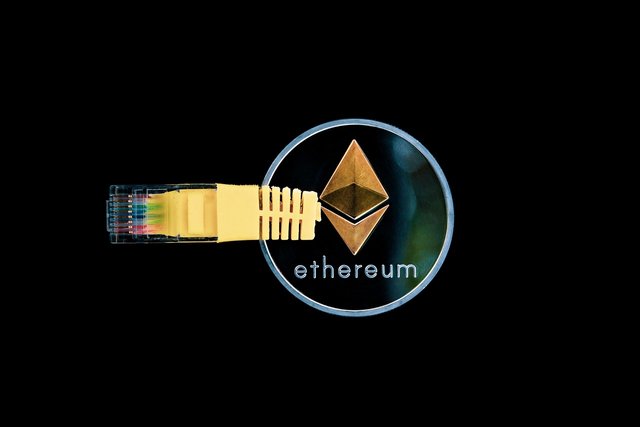Steemit Crypto Academy Contest / SLC S23W3 :Advanced DeFi – Liquid Staking and Real-World Asset Integration
Liquid Staking and Real-World asset (RWA) tokenization has transformed Decentralized Finance (DeFi) in tremendous way giving rise to pivotal innovations. Liquid Staking is known to enhance capital efficiency in the sense that users are allowed to stake their assets while they maintain liquidity while Real-World Asset Tokenization creats an integration between traditional finance and the blockchain so that there can be new opportunities for investment. However, users are able to optimise yields, gain access to more resilient financial structures and diversify their portfolio when both concepts are integrated together.
Question 1: Understanding Liquid Staking
Explain the fundamentals of liquid staking and how it differs from traditional staking. Discuss its advantages and risks, using relevant examples from platforms like Lido, Rocket Pool, or Frax.
Understanding Liquid Staking.
Liquid Staking is a concept that enables traders stake their assets in a proof-of-stake (PoS) blockchain and at the same time allow them maintain liquidity over their assets. Traditional staking allows a users to lock up their tokens in other for them to secure the network, take part in the governance and earn rewards. But then, they can't access or liquidise these tokens except they unstake their token which is often after a period specified for lock up.
However, liquid staking has actually solved the above problem because it issues a liquid derivative token that represents the staked asset. For instance, when a trader stakes on a staking platform like Lido or Rocket Pool, they are issued a token like stETH or rETH which they can either trade, lend or use as collateral on other DeFi protocols while they still earn rewards for staking. Let's see some key differences between liquid staking and traditional staking.
Differences
- Rewards: Traders are allowed to receive rewards and simultaneously keep their capital active on DeFi. They earn liquid tokens that are equivalent to the amount that was staked, this is as a result of liquid Staking.
- Flexibility: Traditional staking isn’t flexible in the sense that traders lock up their assets and must wait till the withdrawal period for the to claim their assets. While liquid staking allows users to stake their assets and still have access to liquidity at the same time.
The Advantages
- Yield Maximization: the liquid staking allows users to implement the "staking rewards + yield farming" process, that is, the user can stack their yields and still use the liquid staked tokens in the liquidity pools or lending platforms.
- Lower Barriers to Entry: platforms that make use of the liquid staking allows users to stake smaller amounts that is even less than the required amount by native PoS chains.
- Liquidity: Liquid staking enables the staked assets to be usable when trading on the DeFi applications.
The Risks
- Smart Contract Risk: Liquid staking can be open to hacks, subject to bugs or exploits since it involves smart contracts.
- Derivative Devaluation: Users can face losses if there is a significant diverge in the prices of the liquid staked token from what the underlying asset is, this can happen when the trader is trying to exchange the derivative back.
- Centralization Risk: Large platforms that still employ the centralization process raises concerns over the decentralization of the network because they control a large share of the staked assets.
Lets take Lido platform for instance that offers centralized process, they allow users to stake ETH and gave them stETH which they can use on protocols like Aave or Curve to gain more yield, while they still gain rewards from the ETH staked. However, Rocket Pool follows the same operation but focuses on the decentralization alternative with rETH and node operator diversity.
Question 2: Opportunities in Real-World Asset Tokenization
Analyze how tokenization of real-world assets is changing DeFi. Provide examples of platforms enabling RWA tokenization and discuss potential benefits and challenges.
Opportunities in Real-World Asset Tokenization
In DeFi, Real-World Asset Tokenization is growing fast and becoming very popular. This is when traditional assets like commodities, bond or real estate are been digitized on a blockchain. This process allows fractional ownership, its also allows previously illiquid assets to be traded, integrated into DeFi protocols or used a collateral. Some Examples of platforms that allows tokenization of assets are Maple Finance which provides tokenized corporate loans, Centrifuge tokenizes invoices and supply chain finance assets. While RealT facilitates financial ownership of realestate properties, Ondo Finance offers a tokenized exposure to the traditional financial instruments. All these platforms allows RWAs to be used within the DeFi ecosystem.
Benefits
- Institutional Participation: RWA tokenization allows retail investors to have access to assets like commodities or real estate that were previously limited to only large institutions.
- Liquidity for Illiquid Assets: Tokenization allows global 24/7 trading of assets, that is assets that are traditionally difficult to trade and were previously constrained by traditional finance becomes liquid making them easy to buy, sell and use with the DeFi applications.
- Diversification and Yield Generation: RWAs creates reliable streams of income in the sense that investors can earn returns by lending against these assets or using them in liquidity pools and also it reduces the exposure of DeFi to volatility.
Challenges
- Valuation Uncertainty: the certainty of pricing for tokenized assets can be challenging because there is lack of transparency, also the auditing standards can deter investors.
- Regulatory and Compliance: Compliance with different jurisdictions can be challenging in the sense that tokenizing real-world assets can attract legal complexities like ownership rights and securities regulations.
- Counterparty Risk: Many Real-World Assets reply mostly on off-chain data and entities, these makes them face risks like fraud or default from underlying asset issuers.
Lets take Centrifuge for instance, they allow businesses tokenize their real-world assets which they can set as collateral when they borrow through protocols like Aave. This process bridges the gap that exit between traditional finance and DeFi. The decentralization process enables users create liquidity for there off-chain assets.
Question 3: Practical Applications of Liquid Staking in DeFi
Demonstrate how liquid staking can be incorporated into yield farming or leveraged in DeFi protocols. Use an example of a strategy involving liquid staked tokens (e.g., stETH, rETH) and describe potential risks.
Practical Applications of Liquid Staking in DeFi
Liquid staking allows users the opportunities to earn rewards even as they participate in the activities on DeFi. Tokens like stETH and rETH when integrated into these various DeFi activities and strategies like yield farming, liquidity provision or collateralized lending can help the user gain more yields.
Lets look at an Example Strategy for a user which involves Yield farming with stEth on curve.
On the Lido platform, first, a user has to stakes ETH so that he can be able to receive stETH. Next he can go ahead deposit this stETH into a liquidity pool on Curve as collateral, by so doing, the user will be able to provide liquidity for trading stETH/ETH pairs. However, the user can now earn from the Curve, a trading fee and CRV tokens and also continue to earn ETH staking rewards from lido at the same time. In this scenario, the user is able to maximise yield from staking rewards and liquidity provision.
Potential Risks
- Liquidation Risk: User might face losses if there is a significant decline in the price of stETH/ETH peg especially when converting back to ETH, the collateral may be liquidated too.
- Smart Contract Risk: Bugs or exploits in smart contracts can lead to loss of funds, that is, the liquidity pool can be vulnerable to exploits.
- Impermanent Loss: User can experience impermanent loss in the liquidity pool if there is a significant price change of stETH relative to ETH.
Question 4: Building a DeFi Strategy with Liquid Staking and RWAs
Design an investment strategy that integrates both liquid staking and RWA tokenization. Explain how this strategy can optimize yield, reduce risk, and adapt to different market conditions.
Integrating both liquid staking and RWA tokenization is a great way of building a robust DeFi Strategy and balanced portfolio. They both help to optimise yields and diversify risk. Now, lets look at an Example Strategy of implementing both liquid staking and RWA tokenization.
- Step 1, Liquidity Staking: Stake ETH on Lido platform or Rocket Pool and receive stETH, which can be used to farm additional yield in a liquidity pool or lending pool such as Aave.
- Step 2. RWA Tokenization: at the same time, for a stable yield, purchase tokenized real estate through RealT or government bonds through Ondo Finance.
- Step 3. Optimize yield: supplying stETH into Aave can optimize lending Interest.
- Step 4. Stable Income Buffer: Crypto volatility can be a problem, so using RWA yields as a hedge can help against that.
- Step 5. Leverage and Risk Hedging: a user can borrow stablecoins which is against stETH and reinvest them into RWAs, they can manage the exposure dynamically.
Why this Strategy works
Firstly, when the staking rewards, DeFi lending and traditional finance yields are combined together, there is a potential higher yield.
Secondly, When a user implements Diversification, RWA can counterbalance the crypto volatility.
Lastly, this strategy offers capital efficiency in the sense that liquidity is maximised while the user is maintaining the staking benefits.
Question 5: Lessons from Real-Life DeFi Innovations
Discuss a real-life or hypothetical scenario where liquid staking or RWA integration significantly impacted a trader’s success or failure. Reflect on key takeaways for future investors.
Lets take a look at a Hypothetical scenario :
A traders borrows ETH using Lido's stETH in an Aava loan, and stakes its back into Lido to receive additional stETH. Using this loop, the trader is able to increase their ETH staking rewards as a result of exposure. At the same time, the trader invested in tokenized U.S treasury bonds through Ondo Finance. During a market downturn, the trader faced liquidation on the Aave loan as the stETH/ETH peg declined. However, the tokenized U.S treasury bonds continued to yield more stable income preventing the trader from lossing the total portfolio.
Key Takeaways
- Monitor Pegged Tokens: it is very advisable to monitor pegged tokens closely as liquid stakes might experience price deviations so as to avoid liquidation.
- Diversification is very important: RWA acts as a hedge against crypto volatility so it advisable to combine RWA with Liquid Staking to reduce risk.
- Stable Yield Sources are very Essential: In a case where there is a downturn, RWA can provide a hedge against DeFi market volatility so it can generate predictable returns.
Conclusion
Combination of Liquid Staking and Real-World Asset Tokenization is bringing about great innovation to DeFi and these provides capital efficiency, new streams of income and Diversification. The blockchain network is evolving and it is ver crucial to understand and implement these tools as it will be of tremendous help to users in terms of optimising yields and managing risk effectively. Moreso, platforms must be carefully selected, risk management should be strategical placed and market conditions must be monitored to sustain success in DeFi.


